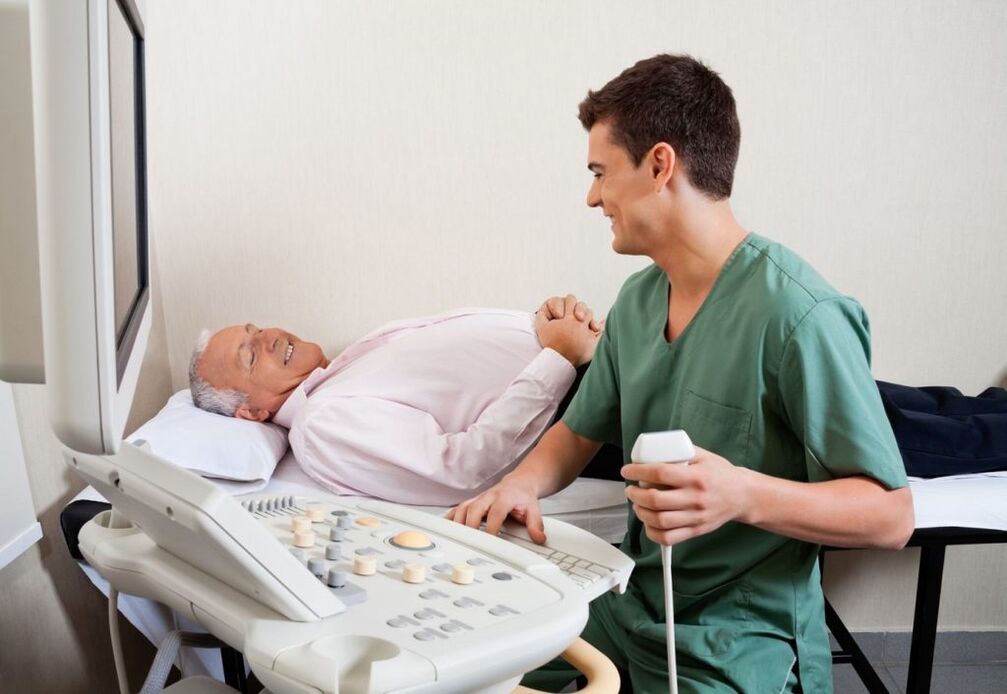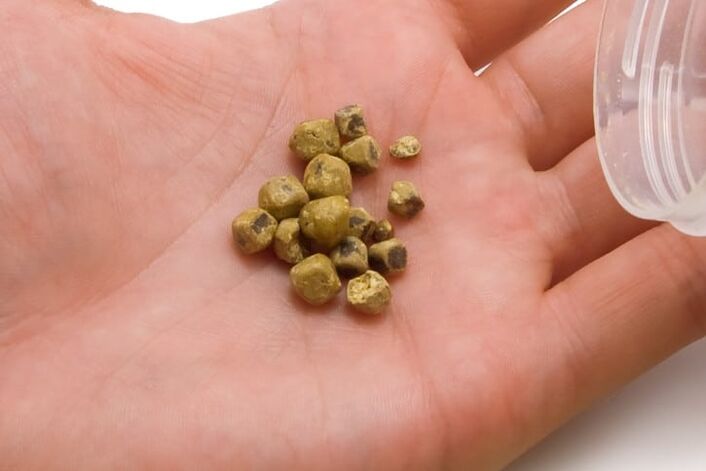One of the dangerous "male" diseases is prostatitis - acute inflammation of the prostate gland. It is accompanied by discomfort while urinating and can threaten infertility. Different types of prostatitis develop at different rates and require a specific treatment. The disease has a number of serious complications and requires prompt diagnosis. This will help to timely determine the specifics and type of the disease in order to conduct treatment at an early stage of the disease.
Diseases and symptoms
The disease can occur in both acute and chronic forms. The method of treatment is selected depending on the symptoms that are characteristic of the pathological process. Signs of acute and chronic forms vary and have several characteristics. The acute form always precedes the chronic form, which can progress to more serious diseases such as adenomas and cancer.
Treatment of prostatitis at any stage of development has a favorable prognosis, if complications do not appear.
Acute prostatitis
Prostate tissues are exposed to pathogenic microorganisms. In addition, the acute form develops as a result of a fungal infection of the organ. Due to the inflammatory process, the balance of the microflora is disturbed and immunity is reduced. As a result, the inflammation of the prostate gland worsens. Other causes of acute prostatitis include:
- Reduced or weakened immunity. Men who have chronic diseases of the genitourinary system and are often prone to colds are at a higher risk of prostate problems than other men.
- Intervention activities. Any surgical operation can cause various diseases.
- Pathology of internal organs. The presence of pathogenic microorganisms can provoke the development of prostatitis.
- Hormonal decline and increased estrogen production. The risk group includes men between the ages of 30 and 40.
- Caries. Untreated dental disease is one of the most common causes of prostate disease. Bad teeth cause the spread of germs throughout the body and cause bacterial prostatitis.
Symptoms of acute prostatitis:
- severe pain in the muscles and lower back;
- delay and frequent urge to urinate;
- erectile dysfunction.

The acute phase requires immediate treatment. The patient is prescribed medication and physical therapy.
Important! At the first sign of illness, you should immediately seek medical attention, which may sometimes require hospitalization. After examination, the specifics of the pathology are established and treatment is prescribed. Self-medication can cause transition from acute to chronic form and serious complications (abscess of adjacent tissues and thrombosis of blood vessels).
Chronic prostatitis
The most dangerous and serious form of the disease. It is characterized by a "slow" process: often the signs of prostatitis do not appear in any way. All types of chronic prostatitis occur due to ignoring symptoms and not getting treatment in time, it can sometimes occur without an acute form. Other possible causes of chronic prostatitis include:
- congestion in internal organs;
- sedentary work, movement disorders;
- weakened immunity;
- Malnutrition;
- bad habits;
- hurt;
- infectious diseases of the genital organs;
- stress;
- Hypothermia.
Lack of therapy can lead to adenomas. Usually, the disease has no symptoms, so men should go for regular check-ups, especially after the age of 30.

Consequences of chronic prostatitis:
- genitourinary and systemic dysfunction;
- burning pain in the groin;
- decreased libido, lack of erection;
- general unrest, weakness.
Chronic prostatitis is treated as an outpatient, but sometimes patients can be hospitalized. Therapy includes a complex of physiotherapy, antibiotics and a therapeutic diet. As additional therapeutic measures, massage is prescribed, in exceptional cases where a surgery is performed.
Classify
Infectious
It is an inflammation of the prostate gland caused by pathogenic microorganisms. It can occur in both acute and chronic forms. Most often, it develops against the background of transferred infectious and fungal diseases, such as influenza, rubella, chickenpox, herpes.

Factors that predispose to the development of bacterial prostatitis include smoking, alcohol consumption, weakened immunity, SARS. Usually this form occurs in patients aged 20 to 40 years. Antibacterial and anti-inflammatory drugs are used for treatment.
Bacteria
A rare type of prostatitis, mainly caused by bacteria - E. coli, staphylococcus, Trichomonas, chlamydia and Pseudomonas aeruginosa. Diagnosis is by blood, urine, and secretion tests. Symptoms correspond to the acute form.
The disease has manifestations of neurological disorders, smoking, alcoholism, stress, depression. Sometimes infection can occur in the postoperative period.
Treatment with antibiotics and non-steroidal drugs to reduce inflammation. Violation of the course of treatment can lead to the transformation of prostatitis into a chronic form.
Mushroom
The cause of the pathology is the introduction of fungi (aspergillus or candida) into the tissues of the prostate gland. Fungal infections can occur due to hormonal changes and long-term use of antibiotics and antibacterial drugs. It also occurs against the background of chronic diseases and reduced immunity. Treatment with folk remedies and self-medication can lead to a chronic form and serious complications.

Sometimes it has no symptoms, making it difficult to diagnose in time. The latent form can cause cancer cells to multiply. Diagnosis by biopsy. With fungal prostatitis, there are disorders in the functioning of the genitourinary system, urethritis, cystitis, pain in the groin and pelvis, fever.
stagnation
It is a chronic type of non-infectious origin. It is caused by a blockage in the pelvic circulatory system or by stagnant secretions of the prostate gland. It may occur in latent form or with mild symptoms. Signs may include mild persistent pain in the genitals, groin, or pelvis, fever, and pain with urination.
Sometimes it manifests as a sexual dysfunction (decreased sex drive, insufficient erection, liquefaction or retention of sperm). For treatment, drugs that stimulate blood circulation, hormonal agents are used. Physical therapy exercises will also be effective.
There is pus
The most dangerous for the patient's health is the pus-filled type. It is characterized by discharge from the urinary tract and fever, indicating the presence of infection.

Stages and subtypes:
- catarrhal.This subtype of prostatitis is isolated as a separate disease of infectious origin. The difference is that there is no pus discharge. All inflammatory processes take place only in the excretory duct of the gland. It was caused by complications of influenza, tonsillitis and SARS. It manifests in the form of frequent urination accompanied by a burning pain, weakness. Prognosis is favorable. Often prescribed complex treatment of concomitant diseases.
- Capsule form.The acute phase begins with inflammatory processes in the ducts of the gland and is a consequence of pathological manifestations in other organs. Symptoms are mild and often invisible to the patient. It can be triggered by infection or inflammation of the ENT organs, respiratory system, urethra, etc. v. It manifests itself in the form of acute pain, a sharp increase in body temperature, and purulent discharge that appears in the severe stage. With prompt treatment, the prognosis is favorable. If the course of treatment is not completed in time, it can progress to the parenchymal stage.
- Parenchyma. It was one of the most difficult and dangerous periods. The pyogenic nature extends to all lobes of the prostate. In this subtype, the outflow of prostate secretions is disturbed and blocked by pus and mucus. The chronic form is usually of a prolonged nature. The patient has dysfunction of the genitourinary system, decreased erection ability and unsatisfactory orgasm. Among the most common causes of purulent prostatitis, gonococcal infection is noted. Treatment is long, but gives a positive effect. Self-medication can lead to life-threatening complications.
- Abscess. The stage is the most dangerous and requires immediate treatment. Manifested as an abscess of prostate tissue. It can cause kidney failure, infertility, cystitis, and sepsis. Complications can lead to death.

One of the main methods of treatment is the use of antibacterial drugs. In advanced cases, the patient is operated on. Self-medication can lead to patient death.
calculate
This is a complex form manifesting with a long course of the disease. It is caused by incorrect therapy or a complete lack of treatment. It is characterized by the formation of rock-like inclusions in the ducts of the gland. Endogenous stones can cause urethral obstruction, causing pain during sexual intercourse, urination, and painful urination.
It can lead to complications like impotence and infertility. Treatment takes place in a hospital, sometimes with surgery. If left untreated, it can cause prostate cancer, benign prostatic hyperplasia and adenoma.

Prevent
Preventive measures will help avoid the development of pathology and reduce the likelihood of infection. The simplest preventive measures are:
- frequent sex;
- personal hygiene;
- quit smoking and alcohol;
- wear comfortable cotton underwear;
- maintain immunity;
- proper nutrition;
- hypothermia protection.

At home, you can prevent the development of pathology by performing simple daily exercises - cycling, shuttlecock, crossbar.
Allocate 10 minutes a day to exercise, you can cut your risk of prostatitis in half.
Simple exercises will also help improve health:
- Stand up straight with the center of gravity on one leg. With the other leg, perform a wide swing back and forth. It is recommended to do 100 rotations with each leg.
- Tilt mark. Stand with your feet shoulder-width apart and alternately lean to the right and left.
- During the day, try to hold your breath for 10-15 seconds several times. Repeat breathing exercises at least 5 times a day.
Prostatitis treatment is a long and complex process that can be frustrating. To protect the body from the development of this pathology, it is necessary to go to the doctor regularly and take preventive measures.































